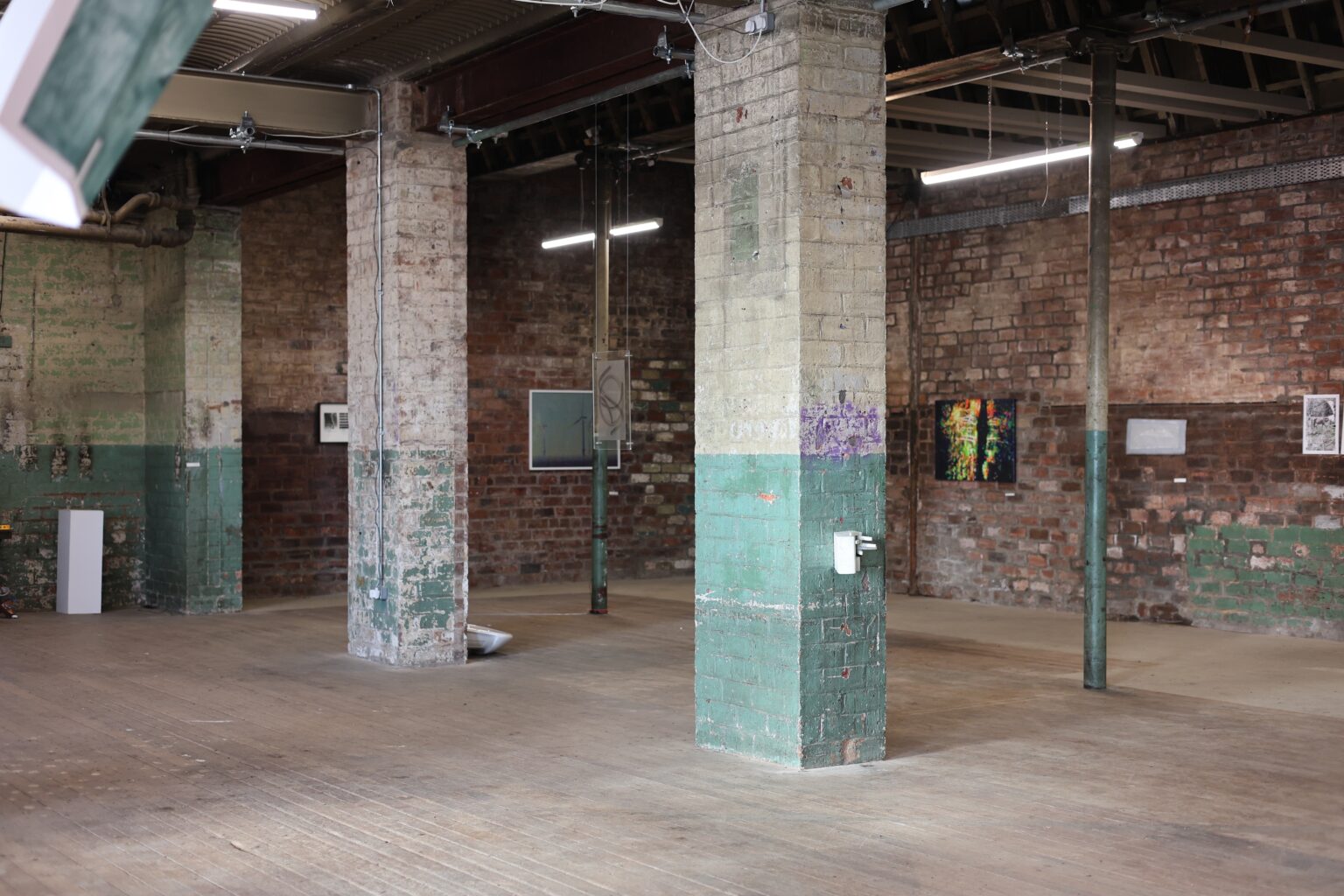Master of Fine Art School of Fine Art
Nayeon Kim

Nayeon Kim is a multidisciplinary artist who explores memory, materiality, and temporality through sculpture and installation. She received her BFA from Sookmyung Women’s University in Seoul in 2022 and is currently pursuing her MFA at the Glasgow School of Art. Her recent practice focuses on how our perception of everyday objects shifts over time and how this relates to emotional and psychological memory. Nayeon moves between personal narrative and broader emotional structures, questioning how memory is constructed not as a fixed archive, but as something fluid, layered, and continually rewritten.
Her early participatory works invited viewers to physically engage with materials that change or vanish over time, such as in We Need Rain Tear Bubbles (2024), where the viewer experienced the flow of time through material transformation. More recently, her attention has shifted toward observing how traces, textures, and the slow erosion of objects form subtle emotional landscapes. In Under the Persimmon Tree, she reconstructs sensory fragments of her grandmother’s home in Korea through partial walls, wooden frames, and architectural metaphors, capturing how memory and place intertwine. Her work resists linear storytelling and instead proposes fragmented, open-ended narratives that reflect the subjective nature of remembering.
As an artist, Nayeon Kim participated in group exhibitions such as WIP (Work in Progress) and Strange Field. Her practice continues to evolve around sculptural and narrative elements that emphasize the ephemeral nature of personal and collective memory.


Under the Persimmon Tree
Under the Persimmon Tree is a site-specific installation that originates from a personal inquiry into the fluidity of memory and perception. It takes the artist’s grandmother’s house in Gangneung, Korea, as both a conceptual and emotional departure point. Having lived apart from her parents since high school and moving between cities, the artist perceives “home” not as a fixed geographical location but as an emotional space, shaped by time and memory. Through the lens of her current life in Glasgow, she reconstructs this remembered place using fragments—faded reddish wallpaper, dust caught in light, and, most significantly, the persimmon tree in the yard.
The persimmon tree, a recurring presence in Korean domestic gardens, served as both a seasonal marker and a memory anchor. It bore fruit each autumn, symbolizing brief yet meaningful family reunions. However, this work is not about nostalgia. Instead, the tree becomes a metaphor for how memory is reshaped in the present—how once-familiar images evolve into unfamiliar interpretations through time and distance.
The installation features a partially wallpapered wall—torn, weathered, and layered—alongside a wooden grid structure and textured sculptural fragments that recall architectural remnants. These elements mimic domestic forms such as bookshelves, window frames, and furniture outlines. Through this spatial composition, the work evokes the erosion, resurfacing, and accumulation of memory.
Memory, in Kim’s work, is never presented as a fixed archive. Rather, it is understood as a dynamic and fragmented process—constantly rewritten by emotional states, temporal shifts, and sensory experience. Objects and environments gradually transform over time, and within these changes, we project our own subjectivities. Even the same object may carry vastly different meanings depending on one’s context of recall.
This conceptual framework is visualized through intentional layering of materials, surfaces, and textures. Traces are layered upon traces, expressing memory as something unstable and incomplete. By integrating sculptural forms with narrative-based video, Kim creates a non-linear and atmospheric landscape. The viewer is invited into a liminal space where personal memories may overlap, resonate, or quietly contradict what is shown.
Under the Persimmon Tree does not propose a singular truth or storyline. Instead, it offers an open-ended dialogue—prompting the audience to interpret and reconstruct meaning through their own emotional and temporal frameworks. In doing so, the work reflects on the ephemeral nature of remembering itself, where memory is not preserved, but continually reimagined.
do you have a key?
do you have a key? is a sculptural installation that traces fragments of memory through a single, familiar object: the key. More than a tool, the key becomes an emotional conduit—opening and closing moments, spaces, and transitions in the artist’s life.
The work draws from the tactile memory of holding a key in Korea, unlocking a childhood home filled with specific textures, sounds, and light. Years later, that same gesture—now performed in Glasgow—evokes a very different emotional landscape. The key begins to lose its original function and gains new, layered meanings shaped by time, distance, and dislocation.
Through cracked surfaces, worn materials, and overlapping patterns, the piece expresses the erosion and resurfacing of memory. The key, as an object, resists fixed symbolism; instead, it drifts between practicality and sentiment, becoming a metaphor for the fluid, shifting nature of belonging.
do you have a key? does not tell a specific story. Rather, it invites the viewer to recall their own—keys they’ve carried, doors they’ve opened, and the emotional weight of spaces they’ve passed through. It quietly asks: what are the things we hold onto, forget, and try to find again?











